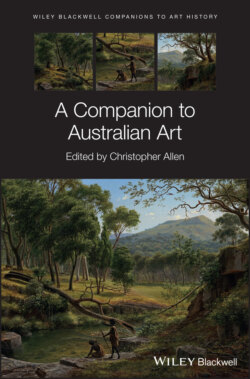Читать книгу A Companion to Australian Art - Группа авторов - Страница 14
III – Dwelling in the World
ОглавлениеHardly had the art of Australia begun to define this sense of belonging, when a new and perhaps surprising phase of expatriation began at the end of the nineteenth and the beginning of the twentieth centuries. As we see in Barry Pearce’s essay on the period, this was partly motivated by particular commissions that required or even expressly stipulated travel to England, such as Roberts’ commission for a vast painting commemorating the opening of Australia’s first Parliament, and partly by a desire to make a mark in London, the great metropolis at the heart of the Empire. Anna Gray’s chapter on the Edwardian period completes the picture of this period before the Great War, including those artists who remained in Australia.
With Denise Mimmochi’s chapter we enter the period between the two World Wars, when modernism first appeared in Australia, though often on a rather modest scale and in a decorative manner; the new art was closely aligned to fashion, advertising, interior decoration and the smart lives of a new urban middle class. By the end of the 1930s, throughout the war and in its immediate aftermath, as we see in Jacqui Strecker’s chapter, the tone grew far more intense and even urgent with the artists collectively referred to as the Angry Penguins, from the title of an avant-garde magazine associated with the movement.
In contrast to the polemical tone of culture during the war, the postwar period was initially less antagonistic, and a number of modernist artists rose above controversy to be broadly recognized in Australia and to a lesser extent in Britain: Sasha Grishin introduces this period when Drysdale, Nolan and Boyd were widely accepted as contemporary cultural stars. Mary Eagle offers an introduction to the cultural and aesthetic debates of this time and their place in an international context, while Christopher Heathcote chronicles the rise of the modern art market and the emergence of the dealer galleries that managed the careers of the principal figures of the time.
Richard Haese, finally, deals with the rise of a new avant-garde from the 1960s and 1970s, which brought with it renewed and sometime bitter polemics, both about style and the aesthetic direction of art and about its role in social and political life.
